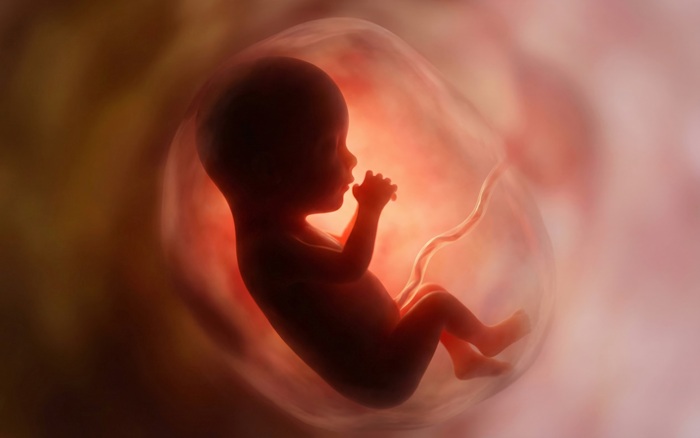Ablation Device Treats Heavy Menstrual Bleeding
|
By HospiMedica International staff writers Posted on 06 Sep 2015 |

Image: The Minerva Surgical Endometrial Ablation System (Photo courtesy of Minerva Surgical).
A new endometrial ablation system treats menorrhagia in premenopausal women due to benign causes, and for whom childbearing is complete.
The Minerva Surgical Endometrial Ablation System uses three separate ablation mechanisms to provide a safer and more effective means of treating excessive menstrual bleeding. The system is based on an impedance controlled treatment cycle specific to individual patient conditions. The first ablation step uses bipolar radiofrequency (RF) energy to ablate the endometrium. The second step uses the high voltage RF electrical current to ionize fully contained and circulated argon gas within a plasma formation array (PFA) sealed silicone membrane.
When the stretchable silicone membrane is deployed it conforms to the uterus; once energized, the argon gas is ionized, turning it in to a stream of plasma which heats the interior surface of the silicone membrane. The thermal energy is then conducted uniformly to the tissue in contact with the membrane. In the third step, released intra-cavitary fluids fills the gaps missed in the first two steps and further ablate remaining endometrial tissue. The system integration results in a faster procedure time and improved tissue contact.
Other features of the system include easy insertion, seating, and a non-stick atraumatic removal due to the lubricous nature of the silicone membrane array; a patented uterine integrity test (UIT) that automatically checks the integrity of the uterine cavity including the array membrane; and a cervical sealing balloon that positively seals the cervix canal near the internal os. The Endometrial Ablation System is a product of Minerva Surgical (Redwood City, CA, USA), and has been approved by the US Food and Drug Administration (FDA).
Menorrhagia, described as heavy and prolonged menstrual bleeding which disrupts a woman's normal activities, is one of the most common complaints in gynecology. Bleeding generally lasts for more than a week, requiring women to change their pad or tampon every two hours or less. Women with menorrhagia may also pass large blood clots and experience anemia due to the volume of blood loss. Constant lower abdominal and pelvic pain, tiredness, fatigue, and shortness of breath due to the heavy bleeding are also common.
Related Links:
Minerva Surgical
Minerva video
The Minerva Surgical Endometrial Ablation System uses three separate ablation mechanisms to provide a safer and more effective means of treating excessive menstrual bleeding. The system is based on an impedance controlled treatment cycle specific to individual patient conditions. The first ablation step uses bipolar radiofrequency (RF) energy to ablate the endometrium. The second step uses the high voltage RF electrical current to ionize fully contained and circulated argon gas within a plasma formation array (PFA) sealed silicone membrane.
When the stretchable silicone membrane is deployed it conforms to the uterus; once energized, the argon gas is ionized, turning it in to a stream of plasma which heats the interior surface of the silicone membrane. The thermal energy is then conducted uniformly to the tissue in contact with the membrane. In the third step, released intra-cavitary fluids fills the gaps missed in the first two steps and further ablate remaining endometrial tissue. The system integration results in a faster procedure time and improved tissue contact.
Other features of the system include easy insertion, seating, and a non-stick atraumatic removal due to the lubricous nature of the silicone membrane array; a patented uterine integrity test (UIT) that automatically checks the integrity of the uterine cavity including the array membrane; and a cervical sealing balloon that positively seals the cervix canal near the internal os. The Endometrial Ablation System is a product of Minerva Surgical (Redwood City, CA, USA), and has been approved by the US Food and Drug Administration (FDA).
Menorrhagia, described as heavy and prolonged menstrual bleeding which disrupts a woman's normal activities, is one of the most common complaints in gynecology. Bleeding generally lasts for more than a week, requiring women to change their pad or tampon every two hours or less. Women with menorrhagia may also pass large blood clots and experience anemia due to the volume of blood loss. Constant lower abdominal and pelvic pain, tiredness, fatigue, and shortness of breath due to the heavy bleeding are also common.
Related Links:
Minerva Surgical
Minerva video
Latest Surgical Techniques News
- Minimally Invasive Surgery Proven Safe and Effective for Complex ‘Whipple’ Procedure
- Catheter-Based Procedures Offer Less Invasive Option for Treatment of Valvular Disease
- Laparoscopic Surgery Improves Outcomes for Severe Newborn Liver Disease
- Novel Endoscopy Technique Provides Access to Deep Lung Tumors
- New Study Findings Could Halve Number of Stent Procedures
- Breakthrough Surgical Device Redefines Hip Arthroscopy
- Automated System Enables Real-Time "Molecular Pathology" During Cancer Surgery
- Groundbreaking Procedure Combines New Treatments for Liver Tumors
- Ablation Reduces Stroke Risk Associated with Atrial Fibrillation
- Optical Tracking Method Identifies Target Areas in Robot-Assisted Neurosurgery
- General Anesthesia Improves Post-Surgery Outcomes for Acute Stroke Patients
- Drug-Coated Balloons Can Replace Stents Even in Larger Coronary Arteries
- Magnetic Kidney Stone Retrieval Device Outperforms Ureteroscopic Laser Lithotripsy
- Absorbable Skull Device Could Replace Traditional Metal Implants Used After Brain Surgery
- Magic Silicone Liquid Powered Robots Perform MIS in Narrow Cavities
- 'Lab-on-a-Scalpel' Provides Real-Time Surgical Insights for POC Diagnostics in OR
Channels
Critical Care
view channel
Soft Robots Could Donate Their Heart to Humans
Heart failure is a growing global health burden, and existing artificial hearts and mechanical pumps often fall short of long-term clinical needs. Many current devices rely on rigid components and complex... Read more
Bioadhesive Strategy Prevents Fibrosis Around Device Implants on Peripheral Nerves
Peripheral nerves connect the brain and spinal cord to muscles, organs, and sensory systems, making them key targets for treating neurological and systemic diseases. However, implantable bioelectronic... Read morePatient Care
view channel
Revolutionary Automatic IV-Line Flushing Device to Enhance Infusion Care
More than 80% of in-hospital patients receive intravenous (IV) therapy. Every dose of IV medicine delivered in a small volume (<250 mL) infusion bag should be followed by subsequent flushing to ensure... Read more
VR Training Tool Combats Contamination of Portable Medical Equipment
Healthcare-associated infections (HAIs) impact one in every 31 patients, cause nearly 100,000 deaths each year, and cost USD 28.4 billion in direct medical expenses. Notably, up to 75% of these infections... Read more
Portable Biosensor Platform to Reduce Hospital-Acquired Infections
Approximately 4 million patients in the European Union acquire healthcare-associated infections (HAIs) or nosocomial infections each year, with around 37,000 deaths directly resulting from these infections,... Read moreFirst-Of-Its-Kind Portable Germicidal Light Technology Disinfects High-Touch Clinical Surfaces in Seconds
Reducing healthcare-acquired infections (HAIs) remains a pressing issue within global healthcare systems. In the United States alone, 1.7 million patients contract HAIs annually, leading to approximately... Read moreHealth IT
view channel
EMR-Based Tool Predicts Graft Failure After Kidney Transplant
Kidney transplantation offers patients with end-stage kidney disease longer survival and better quality of life than dialysis, yet graft failure remains a major challenge. Although a successful transplant... Read more
Printable Molecule-Selective Nanoparticles Enable Mass Production of Wearable Biosensors
The future of medicine is likely to focus on the personalization of healthcare—understanding exactly what an individual requires and delivering the appropriate combination of nutrients, metabolites, and... Read moreBusiness
view channel
Philips and Masimo Partner to Advance Patient Monitoring Measurement Technologies
Royal Philips (Amsterdam, Netherlands) and Masimo (Irvine, California, USA) have renewed their multi-year strategic collaboration, combining Philips’ expertise in patient monitoring with Masimo’s noninvasive... Read more
B. Braun Acquires Digital Microsurgery Company True Digital Surgery
The high-end microsurgery market in neurosurgery, spine, and ENT is undergoing a significant transformation. Traditional analog microscopes are giving way to digital exoscopes, which provide improved visualization,... Read more
CMEF 2025 to Promote Holistic and High-Quality Development of Medical and Health Industry
The 92nd China International Medical Equipment Fair (CMEF 2025) Autumn Exhibition is scheduled to be held from September 26 to 29 at the China Import and Export Fair Complex (Canton Fair Complex) in Guangzhou.... Read more















